I wrote the first version of my proposal based on the rules of the Conditional Design Workbook. I’d like to engage my audience by hosting workshops. Ideally, the workshops will enable participants to see their discarded cardboard boxes in a different light. However, one feedback I received from the tutorial group was that the workshop’s purpose was unclear or unachievable. As I’ve already spent so much time examining corrugated cardboard and know more about it and its system than regular consumers, I would extract valuable insights from them. My original plan is produce new knowledge through building collages, micro-sculptures and answering questionnaire; however, it might not be the best way to engage people and make their time worthwhile.
Though nothing below will be used in the final proposal, here is my proposal version 1
(I skipped the step-by-step workshop proposal as it was long and dull.)
My interest and question
Recycling is often branded as a solution to waste, but it is actually a form of discarding, subsidised by manufacturers of disposable products. This dynamic relationship validates the continuous production of disposables, sustaining businesses at significant environmental and human costs. These costs remain invisible today, from minimum-wage workers to biodiversity loss. Who ultimately bears the consequences and externalities of these systems, and at what expense?
Medium
Cardboard, a primary packaging material for consumer goods, has been celebrated for its recyclability. However, its production comes with environmental and human costs. For instance, managed forests cultivated for cardboard production often replace native plantations, threatening local biodiversity.
Audience
My target audience includes subscribers of delivery services, many of whom are the primary caretakers managing household needs. They are experienced e-commerce users who often recycle packaging, believing it to be a meaningful contribution to sustainability. However, the labour that sustains this system extends beyond them, encompassing delivery personnel, sorting facility staff and bin workers.
Method
My research to date has relied on academic articles, books and personal experiments in papermaking and screen printing, offering valuable insights into the networks surrounding cardboard and the recycling system. However, these methods lack first-hand data and lived experience of the actual audiences.
Through this project, I aim to bridge this gap by hosting physical workshops that connect personal narratives to broader, systematic societal patterns. Participants will bring in a piece of cardboard from their household and explore its lifecycle by creating samples with circle cutters of various sizes. They will also answer prepared questions, focusing on cardboard’s handlers, purposes and lifecycle in the formats of multiple-choice, dichotomous, rating and open-ended questions.
The workshop will culminate with participants creating micro-sculptures, motifs, and drawings from cardboard. These will be collected and bound into an interactive physical publication. This tactile engagement will allow participants to experience cardboard beyond its consumer context, situating their individual experiences within the broader societal and environmental systems.
The leftover cardboard will be collected at the end of the workshop and remade into paper sheets to be used in the final publication. The physical publication will also spotlight hidden labour and invisible environmental costs.
A trial of the workshop will be run in one of the working spaces at the Central Saint Martins, with invitations sent out to students who purchase daily household products online. The final workshop will be free and advertised online through Eventbrite. The location is unknown yet.
The one thing I like my week 1 exploration is examining my own discarded cardboard myself.
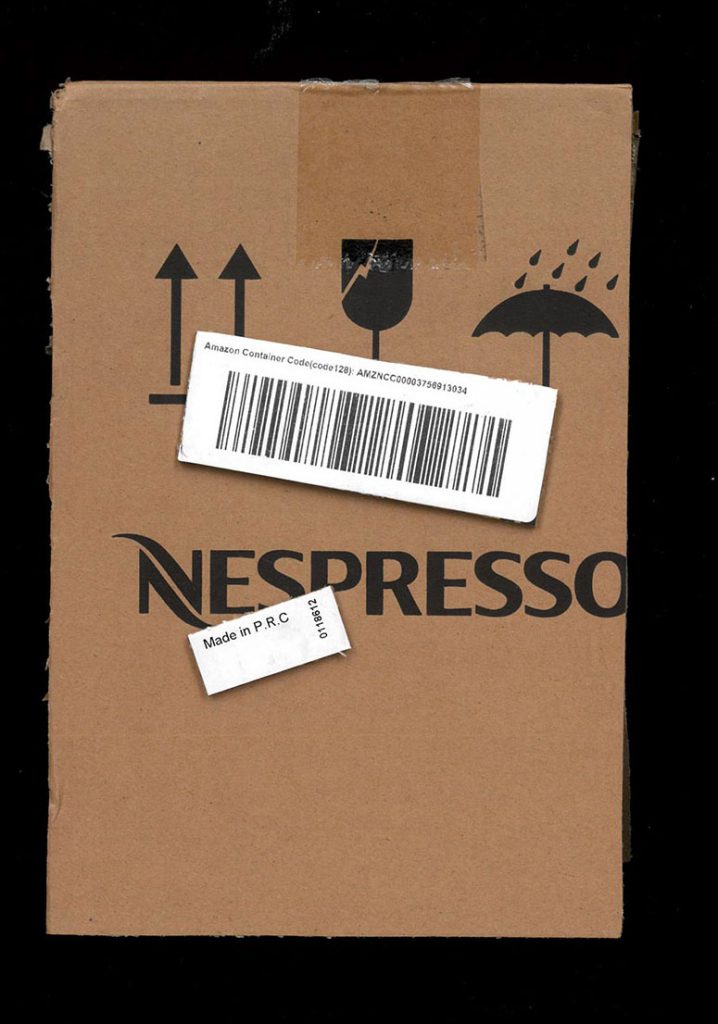
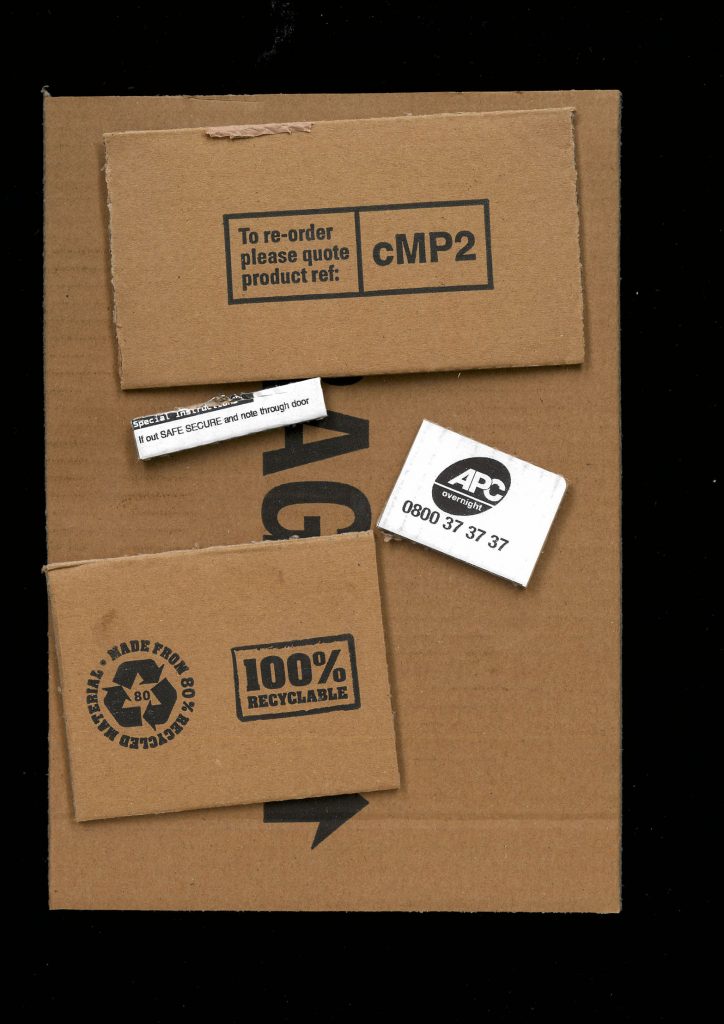
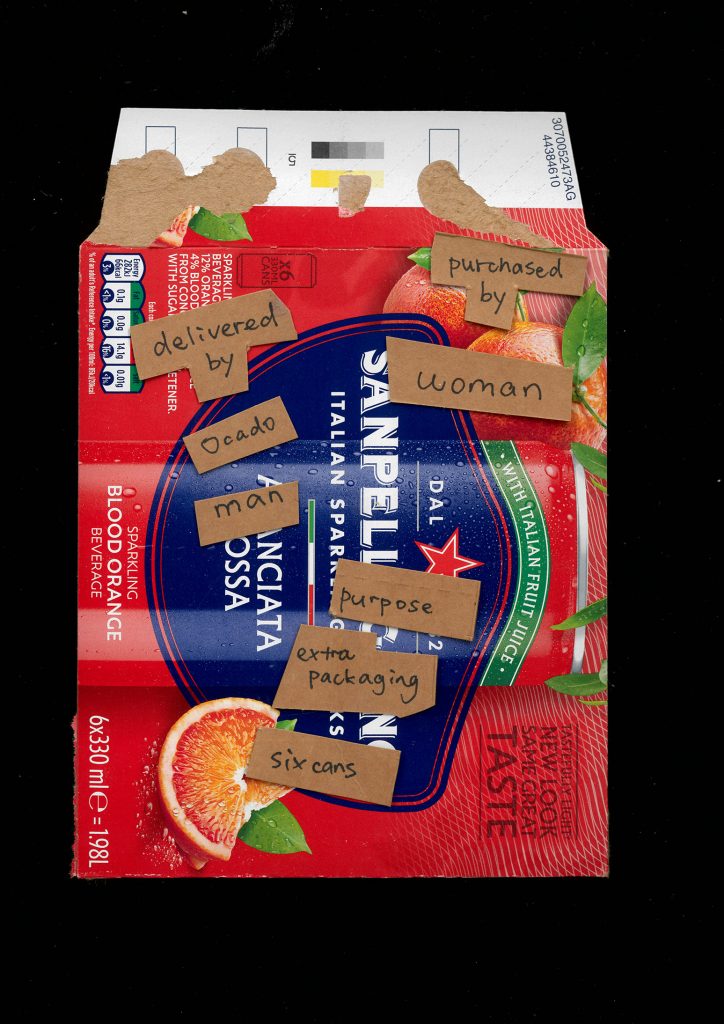
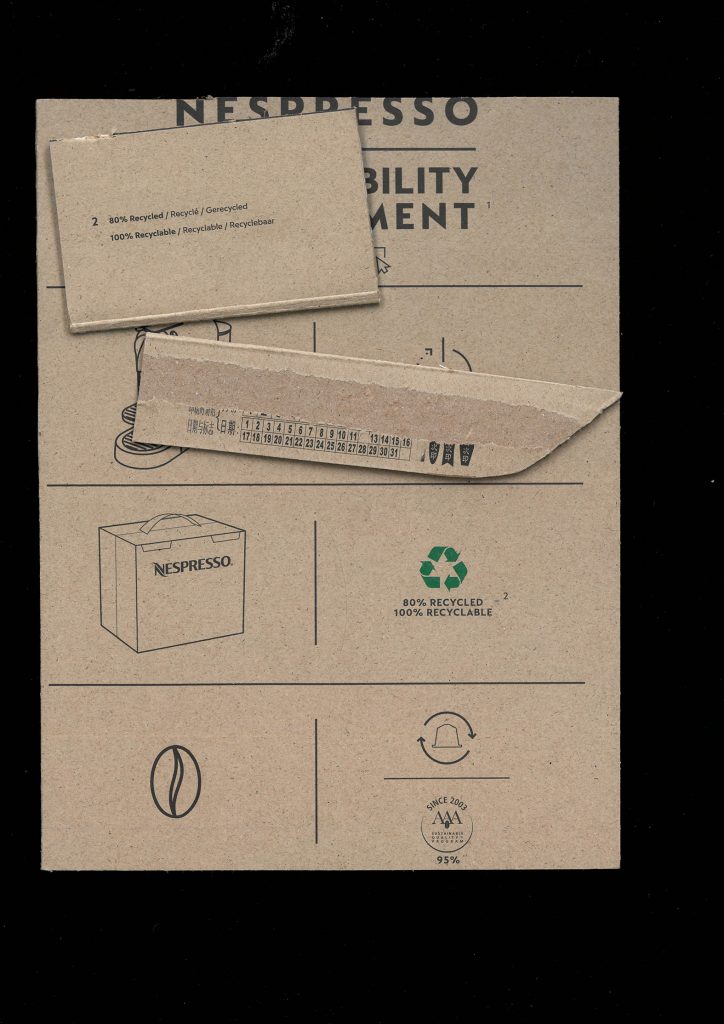
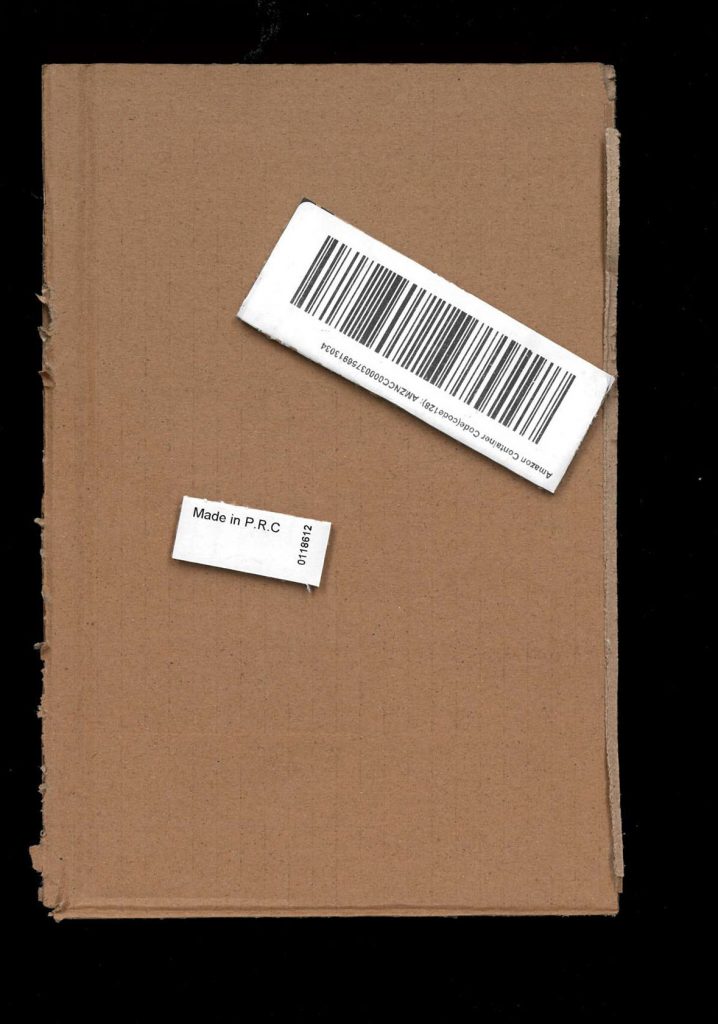
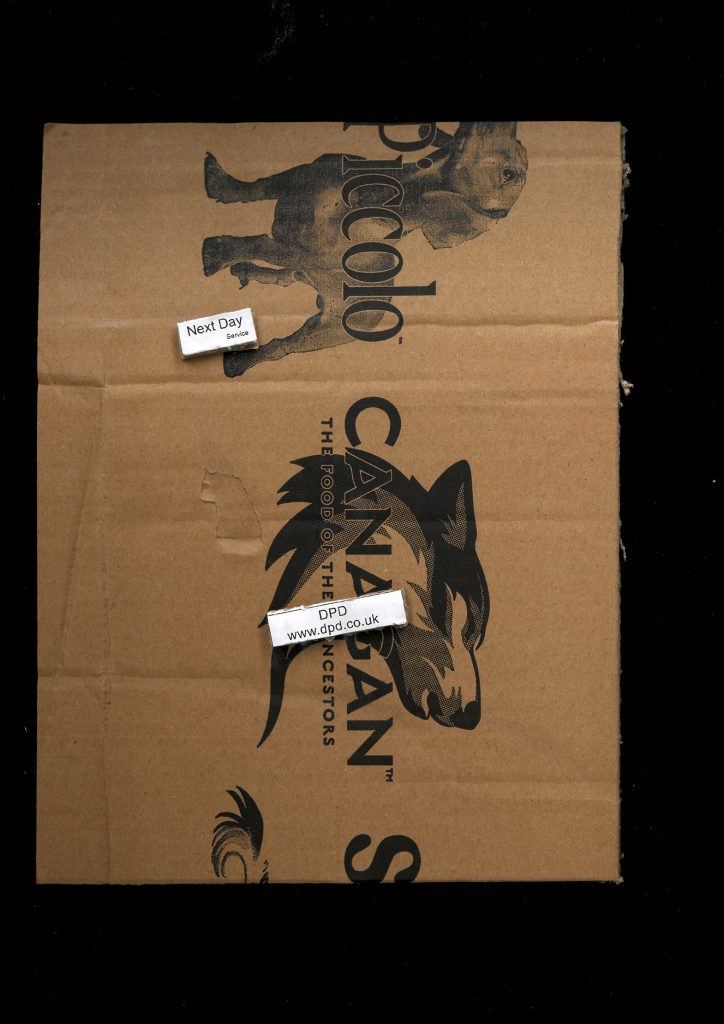
Investigate these boxes’ journeys by examining the type of cardboard, shipping labels, and other visual properties